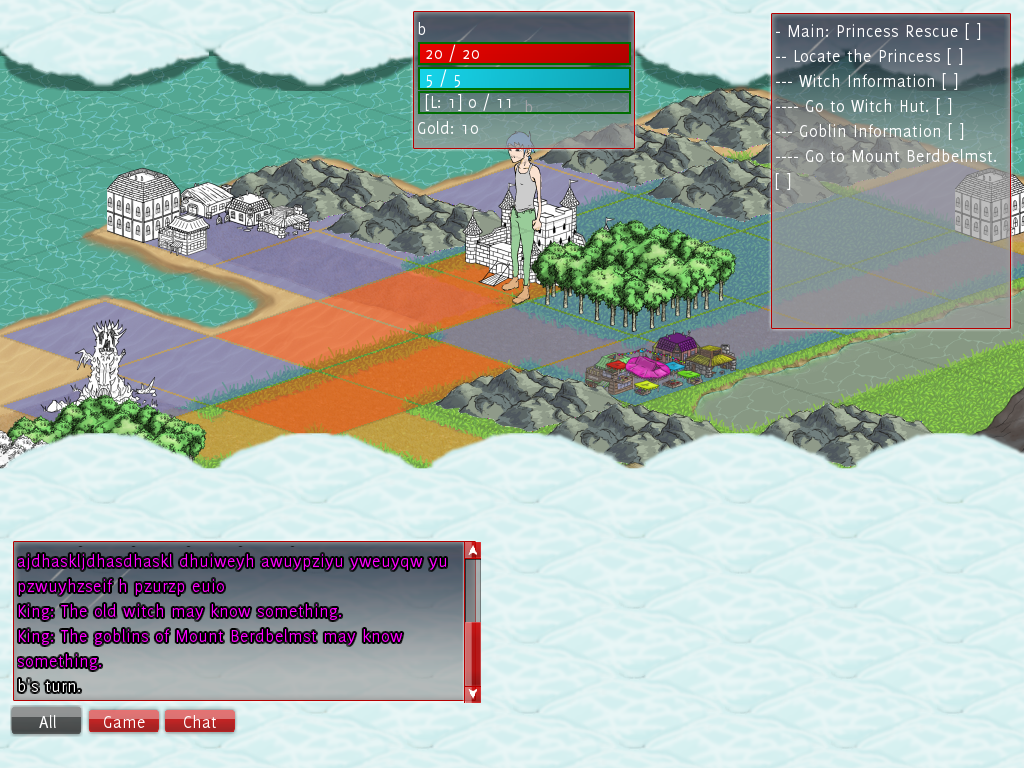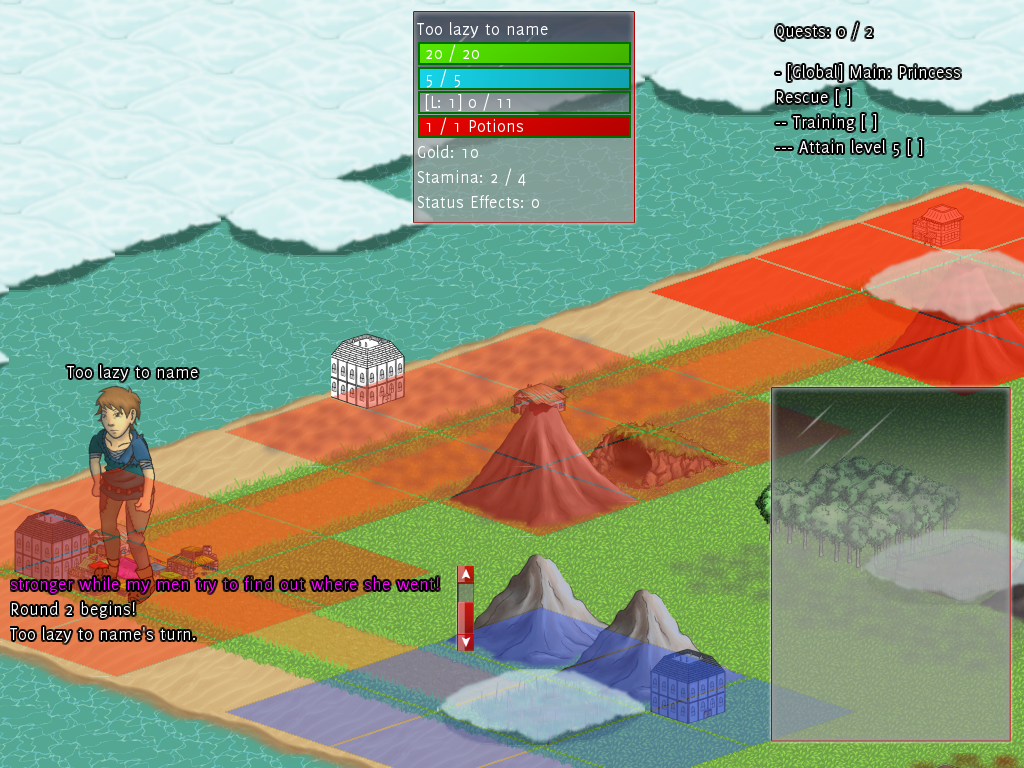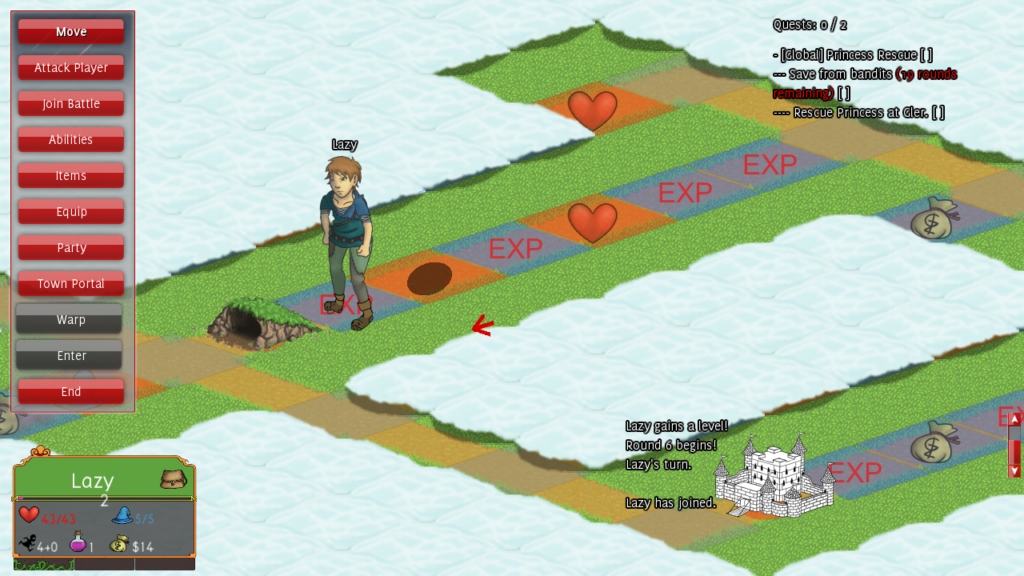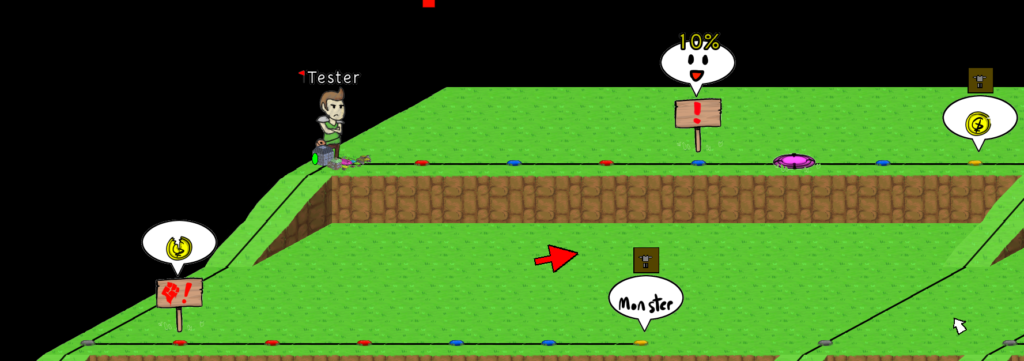I basically dropped the blog this year for various reasons. That was probably a negative overall, so let’s bring it back up to speed.
The primary focus for Update 9- which here in November still hasn’t been finished- was squarely on making the game more intelligible to normal human beings. The scope of this ranges from improving the way the game presents information, a complete redesign of the user interface, and even shaving down mechanics to be more easily understood. To this end I started out by writing a series of proposals for things to improve.
The first one was to finally implement the new map art style we had been planning for months prior. The game has undergone dramatic shifts in overworld movement over the years that finally required changing how we present maps
The first style allowed “free roam” over the map similar to most tactics games. It was basically just a random first guess to see how it felt. How far players could move was mostly just determined by a movement stat and terrain bonuses.
The second style evolved into a more limited “node movement” where players could only move between key locations, a response to the empty spaces being a waste of time. The exact movement mechanics varied, but by the end players had “stamina” which dictated how many nodes they could move in a turn.
The main problem with the second style was that it didn’t give players very strong goals, they mostly roamed around powering up and ignoring the main quest goals and battles- making for drawn out, noncompetitive games where a major system felt irrelevant. This style eventually evolved to create the concept of “gate” nodes that required players to complete battles or other challenges before they could freely walk onto them, solving the detached battles problem.
Making quest goals more obviously pressing was the primary objective of the third map style, which turned the map into a linear board game where players could choose which lane to go down- making it far more obvious that the goal of the game was to reach the end of the board before other players. In general I like to think of the format as a dungeon where players try to go as deep as possible before retreating to town. Movement turned into dice rolls to create a gambling tension, and also functioned as compressing the older random events into a much faster presentation by being part of the movement (sadly at the loss of world flavor).
At this point the original isometric graphics hardly made any sense with the new linear map style. Scrapping the existing art was a hard choice, but when combined with a new art direction aimed at greater productivity we knew it was the right choice. The end result to date:
You might think rebuilding our entire map engine and adjusting the game to use it would have been the biggest time investment. The reality is that it was entirely finished by the end of January. Updating the user interface would go on to consume the rest of the year, and probably beyond. Next time I’ll talk about how that process went down.



